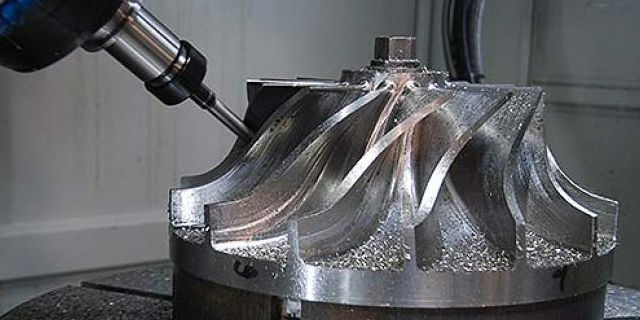When someone uses the term “5-axis” they are typically referring to the ability of a CNC machine to move a part or a tool on five different axes at the same time. 3-axis machining centers move a part in two directions (X and Y), and the tool moves up and down (Z). 5-Axis machining centers can rotate on two additional rotary axes (A and B) which help the cutting tool approach the part from all directions.
What is 5-axis CNC Machining?
In the simplest terms, 5-axis machining involves using a CNC to move a part or cutting tool along five different axes simultaneously. This enables the machining of very complex parts, which is why 5-axis is especially popular for aerospace applications.
However, several factors have contributed to the wider adoption of 5-axis machining. These include:
- A push toward single-setup machining (sometimes referred to as “Done-in-One”) to reduce lead time and increase efficiency
- The ability to avoid collision with the tool holder by tilting the cutting tool or the table, which also allows better access to part geometry
- Improved tool life and cycle time as a result of tilting the tool/table to maintain optimum cutting position and constant chip load



